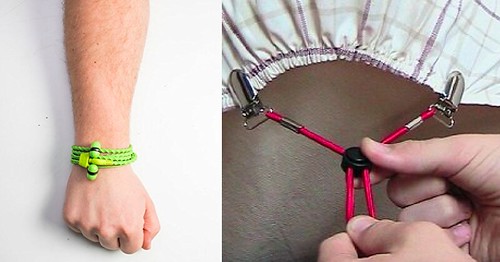Les in HCC, we assembled a microscopy array composed of HCC specimens from an institutional tumor tissue repository to allow tumor HK2 and CKA protein expression to be examined in tandem and in relation to clinicopathologic and survival data obtained from National Cancer Institute Surveillance, Epidemiology, and End Results (SEER) program member registries.Samples demonstrating tumor cell localization of the antibody stains were classified as positive for protein expression. A hepatobiliary pathologist (OC) inspected each set of specimen cores  and also rated the intensity of immunohistochemical staining on a 3-point scale with 1 = mild, 2 = moderate, and 3 = high. The cellular location of antibody staining (cytoplasm, membrane, or nucleus) was also recorded.Statistical MethodsAssociations between protein expression and clinical data were Calcitonin (salmon) price analyzed by the Chi-square test or Fisher’s exact test if appropriate. The time to event was defined as the number of months from the incidence date to the date of last follow-up or death due to any cause. Survival curves were estimated by the Table 1. Summary of SEER Reported Characteristics for 169 patients with HCC.Methods Patients and specimensThe University of Hawaii Committee on Human Studies (IRB) approved this study. As this was a retrospective study using archive tissue specimens and State of Hawaii cancer registry data, the IRB waived the need for written informed consent. Formalin-fixed paraffin-embedded (FFPE) tumor specimens from 157 adult cases of HCC were obtained from the Residual Tissue Repository of the University of Hawaii Cancer Center [21,22]. These samples were derived from cases of HCC diagnosed within our state from the years 1986 to 2009. Only specimens classified under site code C22.0 (liver) and histologic codes 8170?175 (hepatocellular carcinoma) by the International Clasification of Diseases-Oncology-3rd Edition were selected. These samples were annotated with de-identified clinical, pathologic, and survival data collected by the SEER program member registries within our state. Because of the de-identification process, 5-year age ranges were used for analysis in lieu of actual age. The cancer staging system was based on American Joint Commission on Cancer 7th edition TNM schema [23]. Tumor grade was classified according to Edmondson-Steiner histopathologic grading as grade I (well-differentiated), grade II (moderately differentiated), grade III (poorly differentiated), and grade IV (undifferentiated) [24].Characteristic Age Groups (years) ,30 30?4 35?9 40?4 45?9 50?4 55?9 60?4 65?9 70?4 75?9 80?4 85?9 Gender (female/male) Tumor Size , = 5 cm .5 cm Unknown Tumor Grade 1 2 3 4 Unknown Stage (I/II/III/IV) I II III IV Unstaged Alphafetoprotein Level .20 ng/ml , = 20 ng/ml Undetermined doi:10.1371/journal.pone.0046591.tNumber0 3 2 6 16 30 26 21 21 17 9 4 4 46/Tissue Microarray ConstructionThe methods used for tumor tissue micro-array construction are previously described [22,25,26]. Hematoxylin and eosin slides of each tissue specimen block were examined by a surgical pathologist to identify representative areas of tumor tissue. Cylindrical tissue cores measuring 0.6 mm diameter were obtained from the corresponding areas within the tissue blocks and transferred into an array block using a semi-automated LED-209 site tissuearraying instrument (TMArrayer, Pathology Devices, Westminster, MD). When sufficient tissue was available, up to four replicate tissue cores were taken from each sample and.Les in HCC, we assembled a microscopy array composed of HCC specimens from an institutional tumor tissue repository to allow tumor HK2 and CKA protein expression to be examined in tandem and in relation to clinicopathologic and survival data obtained from National Cancer Institute Surveillance, Epidemiology, and End Results (SEER) program member registries.Samples demonstrating tumor cell localization of the antibody stains were classified as positive for protein expression. A hepatobiliary pathologist (OC) inspected each set of specimen cores and also rated the intensity of immunohistochemical staining on a 3-point scale with 1 = mild, 2 = moderate, and 3 = high. The cellular location of antibody staining (cytoplasm, membrane, or nucleus) was also recorded.Statistical MethodsAssociations between protein expression and clinical data were analyzed by the Chi-square test or Fisher’s exact test if appropriate. The time to event was defined as the number of months from the incidence date to the date of last follow-up or death due to any cause. Survival curves were estimated by the Table 1. Summary of SEER Reported Characteristics for 169 patients with HCC.Methods Patients and specimensThe University of Hawaii Committee on Human Studies (IRB) approved this study. As this was a retrospective study using archive tissue specimens and State of Hawaii cancer registry data, the IRB waived the need for written informed consent. Formalin-fixed paraffin-embedded (FFPE) tumor specimens from 157 adult cases of HCC were obtained from the Residual Tissue Repository of the University of Hawaii Cancer Center [21,22]. These samples were derived from cases of HCC diagnosed within our state from the years 1986 to 2009. Only specimens classified under site code C22.0 (liver) and histologic codes 8170?175 (hepatocellular carcinoma) by the International Clasification of Diseases-Oncology-3rd Edition were selected. These samples were annotated with de-identified clinical, pathologic, and survival data collected by the SEER program member registries within our state. Because of the de-identification process, 5-year age ranges were used
and also rated the intensity of immunohistochemical staining on a 3-point scale with 1 = mild, 2 = moderate, and 3 = high. The cellular location of antibody staining (cytoplasm, membrane, or nucleus) was also recorded.Statistical MethodsAssociations between protein expression and clinical data were Calcitonin (salmon) price analyzed by the Chi-square test or Fisher’s exact test if appropriate. The time to event was defined as the number of months from the incidence date to the date of last follow-up or death due to any cause. Survival curves were estimated by the Table 1. Summary of SEER Reported Characteristics for 169 patients with HCC.Methods Patients and specimensThe University of Hawaii Committee on Human Studies (IRB) approved this study. As this was a retrospective study using archive tissue specimens and State of Hawaii cancer registry data, the IRB waived the need for written informed consent. Formalin-fixed paraffin-embedded (FFPE) tumor specimens from 157 adult cases of HCC were obtained from the Residual Tissue Repository of the University of Hawaii Cancer Center [21,22]. These samples were derived from cases of HCC diagnosed within our state from the years 1986 to 2009. Only specimens classified under site code C22.0 (liver) and histologic codes 8170?175 (hepatocellular carcinoma) by the International Clasification of Diseases-Oncology-3rd Edition were selected. These samples were annotated with de-identified clinical, pathologic, and survival data collected by the SEER program member registries within our state. Because of the de-identification process, 5-year age ranges were used for analysis in lieu of actual age. The cancer staging system was based on American Joint Commission on Cancer 7th edition TNM schema [23]. Tumor grade was classified according to Edmondson-Steiner histopathologic grading as grade I (well-differentiated), grade II (moderately differentiated), grade III (poorly differentiated), and grade IV (undifferentiated) [24].Characteristic Age Groups (years) ,30 30?4 35?9 40?4 45?9 50?4 55?9 60?4 65?9 70?4 75?9 80?4 85?9 Gender (female/male) Tumor Size , = 5 cm .5 cm Unknown Tumor Grade 1 2 3 4 Unknown Stage (I/II/III/IV) I II III IV Unstaged Alphafetoprotein Level .20 ng/ml , = 20 ng/ml Undetermined doi:10.1371/journal.pone.0046591.tNumber0 3 2 6 16 30 26 21 21 17 9 4 4 46/Tissue Microarray ConstructionThe methods used for tumor tissue micro-array construction are previously described [22,25,26]. Hematoxylin and eosin slides of each tissue specimen block were examined by a surgical pathologist to identify representative areas of tumor tissue. Cylindrical tissue cores measuring 0.6 mm diameter were obtained from the corresponding areas within the tissue blocks and transferred into an array block using a semi-automated LED-209 site tissuearraying instrument (TMArrayer, Pathology Devices, Westminster, MD). When sufficient tissue was available, up to four replicate tissue cores were taken from each sample and.Les in HCC, we assembled a microscopy array composed of HCC specimens from an institutional tumor tissue repository to allow tumor HK2 and CKA protein expression to be examined in tandem and in relation to clinicopathologic and survival data obtained from National Cancer Institute Surveillance, Epidemiology, and End Results (SEER) program member registries.Samples demonstrating tumor cell localization of the antibody stains were classified as positive for protein expression. A hepatobiliary pathologist (OC) inspected each set of specimen cores and also rated the intensity of immunohistochemical staining on a 3-point scale with 1 = mild, 2 = moderate, and 3 = high. The cellular location of antibody staining (cytoplasm, membrane, or nucleus) was also recorded.Statistical MethodsAssociations between protein expression and clinical data were analyzed by the Chi-square test or Fisher’s exact test if appropriate. The time to event was defined as the number of months from the incidence date to the date of last follow-up or death due to any cause. Survival curves were estimated by the Table 1. Summary of SEER Reported Characteristics for 169 patients with HCC.Methods Patients and specimensThe University of Hawaii Committee on Human Studies (IRB) approved this study. As this was a retrospective study using archive tissue specimens and State of Hawaii cancer registry data, the IRB waived the need for written informed consent. Formalin-fixed paraffin-embedded (FFPE) tumor specimens from 157 adult cases of HCC were obtained from the Residual Tissue Repository of the University of Hawaii Cancer Center [21,22]. These samples were derived from cases of HCC diagnosed within our state from the years 1986 to 2009. Only specimens classified under site code C22.0 (liver) and histologic codes 8170?175 (hepatocellular carcinoma) by the International Clasification of Diseases-Oncology-3rd Edition were selected. These samples were annotated with de-identified clinical, pathologic, and survival data collected by the SEER program member registries within our state. Because of the de-identification process, 5-year age ranges were used  for analysis in lieu of actual age. The cancer staging system was based on American Joint Commission on Cancer 7th edition TNM schema [23]. Tumor grade was classified according to Edmondson-Steiner histopathologic grading as grade I (well-differentiated), grade II (moderately differentiated), grade III (poorly differentiated), and grade IV (undifferentiated) [24].Characteristic Age Groups (years) ,30 30?4 35?9 40?4 45?9 50?4 55?9 60?4 65?9 70?4 75?9 80?4 85?9 Gender (female/male) Tumor Size , = 5 cm .5 cm Unknown Tumor Grade 1 2 3 4 Unknown Stage (I/II/III/IV) I II III IV Unstaged Alphafetoprotein Level .20 ng/ml , = 20 ng/ml Undetermined doi:10.1371/journal.pone.0046591.tNumber0 3 2 6 16 30 26 21 21 17 9 4 4 46/Tissue Microarray ConstructionThe methods used for tumor tissue micro-array construction are previously described [22,25,26]. Hematoxylin and eosin slides of each tissue specimen block were examined by a surgical pathologist to identify representative areas of tumor tissue. Cylindrical tissue cores measuring 0.6 mm diameter were obtained from the corresponding areas within the tissue blocks and transferred into an array block using a semi-automated tissuearraying instrument (TMArrayer, Pathology Devices, Westminster, MD). When sufficient tissue was available, up to four replicate tissue cores were taken from each sample and.
for analysis in lieu of actual age. The cancer staging system was based on American Joint Commission on Cancer 7th edition TNM schema [23]. Tumor grade was classified according to Edmondson-Steiner histopathologic grading as grade I (well-differentiated), grade II (moderately differentiated), grade III (poorly differentiated), and grade IV (undifferentiated) [24].Characteristic Age Groups (years) ,30 30?4 35?9 40?4 45?9 50?4 55?9 60?4 65?9 70?4 75?9 80?4 85?9 Gender (female/male) Tumor Size , = 5 cm .5 cm Unknown Tumor Grade 1 2 3 4 Unknown Stage (I/II/III/IV) I II III IV Unstaged Alphafetoprotein Level .20 ng/ml , = 20 ng/ml Undetermined doi:10.1371/journal.pone.0046591.tNumber0 3 2 6 16 30 26 21 21 17 9 4 4 46/Tissue Microarray ConstructionThe methods used for tumor tissue micro-array construction are previously described [22,25,26]. Hematoxylin and eosin slides of each tissue specimen block were examined by a surgical pathologist to identify representative areas of tumor tissue. Cylindrical tissue cores measuring 0.6 mm diameter were obtained from the corresponding areas within the tissue blocks and transferred into an array block using a semi-automated tissuearraying instrument (TMArrayer, Pathology Devices, Westminster, MD). When sufficient tissue was available, up to four replicate tissue cores were taken from each sample and.